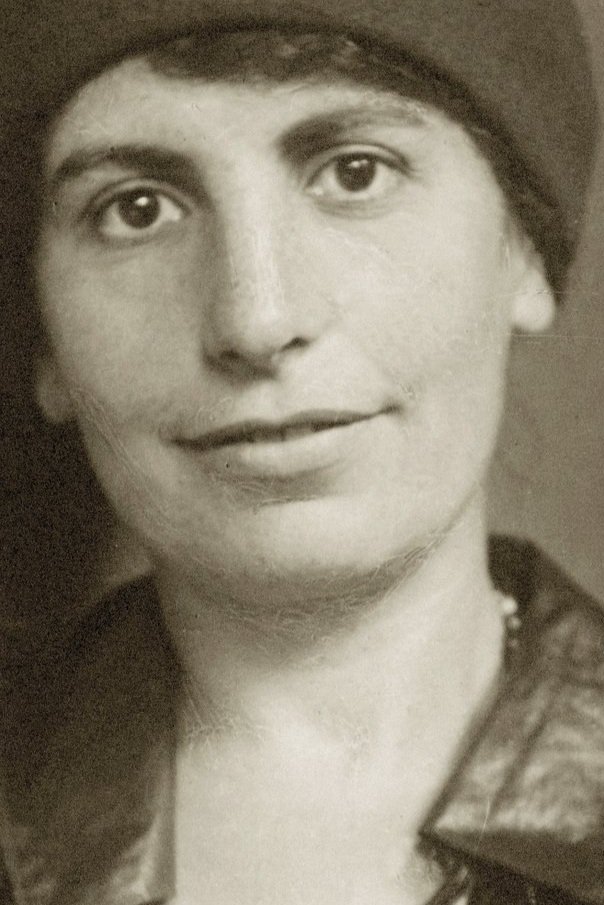An Exploration of Freudian Defence Mechanisms
Sigmund Freud’s psychoanalytic theory revolutionized our understanding of the human mind by highlighting the profound influence of unconscious processes on behaviour, thoughts, and emotions. Among his most enduring contributions is the concept of defence mechanisms: unconscious psychological strategies deployed by the ego to protect the individual from anxiety and inner conflict. By distorting or otherwise altering problematic thoughts and impulses, defence mechanisms enable us to navigate the complexities of everyday life without being overwhelmed by internal turmoil.
This comprehensive exploration of defence mechanisms begins by discussing their origins in Freud’s larger theoretical framework, including the structural model of the mind (id, ego, and superego) and the central role of anxiety. We then examine the foundational mechanism of repression and delve into a range of other defences—such as denial, projection, displacement, rationalization, and sublimation—providing illustrative examples to illuminate how they might manifest in daily life. The conversation moves forward to investigate the relationship between defence mechanisms and psychopathology, acknowledges criticisms of Freud’s ideas, and discusses contemporary views that have emerged in psychodynamic and related fields. In doing so, we gain deeper insight into both the historical context and the modern relevance of Freud’s pioneering ideas on the human psyche.
Historical Context and Theoretical Foundations
Freud’s interest in mental defences arose out of his clinical observations while treating patients in the late 19th and early 20th centuries. Influenced by earlier work on hysteria and neuroses (including his collaboration with Joseph Breuer on cases such as “Anna O.”), Freud recognized that many patients appeared to employ psychological maneuvers to keep distressing experiences or thoughts outside of their conscious awareness. These unconscious strategies seemed to alleviate tension in the short term but also contributed to mental and emotional conflict.
Over time, Freud refined these observations into a systematized approach to the mind, one marked by a few key theoretical pillars:
The Topographical Model: Early in his career, Freud proposed that the psyche could be understood through conscious, preconscious, and unconscious “levels” of awareness. Material in the unconscious, particularly unresolved conflicts or prohibited desires, could give rise to psychological symptoms when it threatened to enter consciousness.
The Structural Model: In The Ego and the Id (1923), Freud added a new dimension to his theory by describing the psyche in terms of three interacting agencies:
Id: The reservoir of instinctual drives, operating according to the pleasure principle and seeking immediate gratification.
Ego: The mediator that operates according to the reality principle; it negotiates between the id’s impulses, the constraints of the external world, and the moral demands of the superego.
Superego: The moral or ethical component of the psyche, internalizing the values, norms, and prohibitions learned from parents and society.
The Role of Anxiety: In Freud’s view, anxiety arises when the ego struggles to balance the often-competing demands of the id, superego, and reality. Anxiety serves as a warning signal that helps the ego mobilize its defense mechanisms to prevent unacceptable impulses, thoughts, or experiences from entering full consciousness.
From these elements, Freud developed his theory of defence mechanisms: unconscious strategies used by the ego to handle the anxiety stemming from conflicts within the psyche. These strategies are universal—people in all cultures, of all ages, employ them to some degree—and can often be adaptive in moderation. However, when overused or inflexibly applied, they can contribute to psychological distress and maladaptive behaviour patterns (Freud, 1915; 1923).
The Nature of Defence Mechanisms: Anxiety and Unconscious Protection
At the core of defence mechanisms is the concept of unconscious protection. Freud posited that we all harbor impulses, wishes, and memories that threaten our sense of security or self-worth. For instance, we might experience hostility toward loved ones, harbor forbidden sexual desires, or hold onto painful childhood memories. A critical function of the ego is to mitigate the resulting anxiety, sometimes by preventing these uncomfortable contents from surfacing into conscious thought.
Anxiety, in the Freudian scheme, is both an unpleasant feeling and a signal: it serves notice that something within the psyche is amiss. It may stem from conflicts in which the superego condemns an impulse from the id, or from external pressures and potential punishments that might follow certain behaviours. Because directly confronting these conflicts can be psychologically distressing, the ego seeks to avoid or reduce tension by deploying an array of defences.
Anna Freud’s Contribution
Although Sigmund Freud initially detailed several defences, it was his daughter Anna Freud who more systematically cataloged and elaborated on them in her seminal work, The Ego and the Mechanisms of Defence (1936). She clarified how each mechanism operates and how reliance on particular defences can shape an individual’s personality and behaviour.
Repression: The Foundation of Defence
Freud identified repression as the cornerstone of all other defence mechanisms. It involves pushing unwanted thoughts, fantasies, or memories from conscious awareness into the unconscious. While other defences might further distort or redirect unacceptable impulses, their basic function relies on keeping certain materials repressed, or in some sense, “out of sight.”
Definition: Repression is the unconscious blocking of thoughts or impulses that evoke a sense of threat, guilt, or shame.
Example: A child subjected to a traumatic event—such as witnessing severe domestic conflict—might be unable to recall the incident as an adult. The memory is not consciously accessible, but it may resurface in symbolic or disguised forms, such as nightmares or difficulty trusting intimate partners.
Freud believed that the repressed material does not simply vanish. Rather, it lingers in the unconscious, exerting influence on behaviour. Unresolved or long-repressed material may manifest through slips of the tongue, psychosomatic symptoms, or in the symbolism of dreams (Freud, 1915).
Key Defence Mechanisms in Freud’s Model
Building upon repression, Freud (and later theorists) identified a multitude of defence mechanisms. Each has its own distinct function, but all operate with the core aim of mitigating anxiety and preserving a semblance of internal equilibrium.
Denial
Denial involves refusing to acknowledge or accept a distressing reality. It is often evident in situations of severe loss, shock, or threat, and can offer temporary relief from emotional overwhelm.
Definition: Protecting oneself from anxiety by blocking external events from awareness.
Example: A person who is suddenly bereaved might behave for days or weeks as if their loved one is still alive, refusing to engage with the reality of the loss.
Though denial can be helpful as an immediate, short-term coping measure in circumstances of acute stress, prolonged denial can obstruct healing or constructive problem-solving.
Projection
Projection entails attributing one’s own unacceptable impulses, thoughts, or feelings to someone else. By externalizing one’s internal conflict, the individual avoids the discomfort of acknowledging it as personally held.
Definition: Shifting blame or responsibility for a disturbing impulse onto others.
Example: An individual who harbors hostile feelings toward a colleague might insist that it is actually the colleague who “hates” them.
Projection can create a distorted interpersonal dynamic, making authentic communication more difficult and breeding misunderstandings.
Displacement
Displacement occurs when a person redirects an emotional reaction from its original source to a safer or more socially acceptable target. This allows the individual to express pent-up emotion without confronting a situation that could provoke even greater anxiety.
Definition: Diverting emotional reactions from the primary source of distress to a substitute.
Example: An employee who feels they cannot express anger toward an overbearing boss may go home and argue with their partner over trivial matters.
While displacement may temporarily relieve tension, it often leads to conflicts with the substitute target, creating new interpersonal problems.
Rationalization
Rationalization involves constructing a seemingly logical or socially acceptable explanation for behaviours or thoughts that might otherwise be unacceptable or anxiety-provoking. Rather than acknowledging the true (perhaps shameful) motivation, the person offers an alternative narrative that feels less threatening.
Definition: Justifying one’s actions or experiences with plausible but false reasons.
Example: A student who fails an exam may claim the test was poorly designed, rather than acknowledging a lack of preparation.
While rationalization can protect self-esteem, excessive reliance on it can interfere with personal growth by preventing honest self-reflection and accountability.
Sublimation
Sublimation is often regarded as one of the more adaptive defence mechanisms. It transforms socially or morally unacceptable impulses into socially acceptable—and even productive—activities.
Definition: Channeling forbidden impulses into constructive pursuits.
Example: An individual with aggressive urges may become a boxer or a surgeon, finding a professional outlet for assertive or invasive impulses.
Through sublimation, the energy tied up in conflictual drives is harnessed for creative or socially valued work, thus satisfying the individual’s impulses in a manner deemed acceptable by both the individual and broader society.
Additional Defence Mechanisms and Their Functions
Over time, clinicians and theoreticians (especially Anna Freud and subsequent psychoanalytic thinkers) expanded on Freud’s original set of defence mechanisms, adding nuances and identifying additional ways in which people protect themselves from anxiety or guilt. Two commonly cited examples are:
5.1 Reaction Formation
Reaction Formation occurs when an individual transforms a forbidden or unwanted impulse into its opposite. The outward manifestation is a radical stance against the very impulse one harbors unconsciously.
Definition: Behaving in the exact opposite way of an unacceptable impulse or desire.
Example: Someone who feels unconsciously attracted to a coworker might overemphasize their moral stance against workplace romance, criticizing others who engage in it.
Reaction formation can be socially adaptive, allowing individuals to channel impulses into socially constructive behaviour. However, if the underlying conflict remains unrecognized, it may lead to rigidity and intolerance toward people who display what one secretly fears in oneself.
Intellectualization
Intellectualization involves detaching emotionally from a stressful situation by focusing on abstract thoughts, facts, or logic. By keeping distressing feelings at bay, a person can maintain composure even in emotionally charged circumstances.
Definition: Avoiding the emotional aspects of a painful event by concentrating on its intellectual components.
Example: After receiving a serious medical diagnosis, an individual might immerse themselves in reading scientific articles about the condition, discussing complex treatment statistics, and adopting a purely clinical attitude to avoid processing fears or sadness.
Although intellectualization can help a person remain levelheaded, excessive reliance on it can stunt emotional processing and personal connections.
Defence Mechanisms and Psychopathology
Freud believed that defence mechanisms were crucial not only for everyday functioning but also for the genesis of certain psychological disorders. Typically, individuals use a variety of defences in flexible and context-appropriate ways. However, when defences become overly rigid, maladaptive, or pervasive—especially if they consistently fail to resolve underlying conflicts—they can lay the groundwork for neuroses or other mental health issues (Freud, 1923; Mitchell & Black, 2013).
Anxiety Disorders: Excessive use of defences can lead to generalized anxiety, phobias, or panic. For instance, unresolved conflicts around aggression or sexuality might be displaced onto harmless objects or situations, generating phobic reactions (e.g., fear of spiders or tight spaces).
Obsessive-Compulsive Disorders: Over-reliance on certain defences, such as isolation of affect (where a painful thought is experienced without the associated emotion), can manifest in ritualistic behaviours that temporarily relieve anxiety but do little to resolve its deeper cause.
Somatic Symptom Disorders: In extreme cases, unconscious conflicts might be expressed through the body via conversion symptoms (e.g., sudden paralysis or blindness with no organic cause). Freud famously described such symptoms as forms of symbolic expression of repressed content.
Psychodynamic Therapy and Defence Mechanisms
Because defence mechanisms lie at the heart of classical psychoanalysis, therapy often aims to bring repressed or distorted experiences into awareness, helping the client develop more adaptive strategies. A therapist might, for instance, encourage patients to see how their repeated projection of hostility onto others fuels interpersonal conflicts, thereby helping them acknowledge and accept their own aggressive impulses. A key assumption is that by understanding these hidden defences, one can alleviate psychological distress, reduce symptoms, and foster greater self-awareness.
Critiques and Limitations
Lack of Empirical Measurement
A long-standing criticism of Freud’s theories is the difficulty of subjecting his concepts—especially unconscious processes—to rigorous empirical testing (Westen, 1998). Defence mechanisms, by their very nature, resist introspective analysis, making them elusive targets for traditional laboratory research. While modern psychological research has developed scales and instruments to measure certain defences (for example, the Defense Style Questionnaire), the subjective complexity of these constructs continues to pose a challenge.
Sociocultural and Environmental Factors
Critics also note that Freud’s original model places insufficient emphasis on sociocultural and environmental influences on behaviour. While Freud did acknowledge the role of parental and societal norms (through the superego), many contemporary theorists argue that factors such as culture, socioeconomic status, and historical context also shape the ways in which individuals deploy defences.
Gender Bias
Some have noted that certain Freudian concepts, including aspects of Oedipal dynamics and phallic-centric theories of development, carry presumptions that might not adequately reflect women’s experiences. Although not directly about defence mechanisms, this critique is part of a broader challenge to the universal applicability of Freudian theory.
Overemphasis on Sexual and Aggressive Drives
Freud’s emphasis on sexual and aggressive instincts as core motivators for human behaviour has been questioned by theorists who propose additional motivators, such as the drive for social connection (object relations theory) or the search for meaning (existential psychology). As a result, some question whether Freud’s understanding of anxiety and defences is complete without incorporating these additional drives and relational factors.
Despite these critiques, Freud’s conceptual framework has significantly influenced both psychology and psychotherapy, inspiring entire schools of thought (e.g., ego psychology, object relations, attachment theory) that retain the notion of unconscious defence but refine or expand upon its functions, development, and variations.
Contemporary Perspectives and Evolving Views
Modern psychodynamic theorists, along with scholars in related fields (e.g., cognitive-behavioural therapy, humanistic psychology), have continued to explore and integrate the concept of defence mechanisms in nuanced ways.
Ego Psychology: Building on Freud’s view of the ego as a mediator, ego psychologists have focused extensively on how the ego develops and adapts through life stages. They regard defence mechanisms as integral to healthy ego functioning rather than simply markers of pathology.
Object Relations and Attachment Theory: These branches emphasize relationships with significant others and early developmental experiences. From this standpoint, defences may form in response to relational traumas or disruptions in the attachment bond, shaping how individuals relate to others throughout their lives.
Cognitive-Behavioural Correlates: While strictly cognitive-behavioural therapists do not typically use the psychoanalytic vocabulary of defence, they do recognize analogous phenomena, such as cognitive distortions (e.g., “catastrophizing,” “black-and-white thinking,” “projection bias”). These are often tackled with techniques like cognitive restructuring, which parallels the psychoanalytic objective of rendering unconscious defenses more visible and modifiable.
Despite methodological disagreements, many contemporary therapists acknowledge that humans employ unconscious strategies to manage inner conflict. This fundamental insight—which Freud introduced—continues to guide modern psychotherapeutic approaches aiming to facilitate deeper self-understanding, emotional regulation, and healthier interpersonal patterns (Laplanche & Pontalis, 2018).
Clinical Implications and Therapeutic Applications
Understanding defence mechanisms carries several key implications for mental health practitioners:
Assessment: Therapists trained in psychodynamic approaches often listen for signs of specific defences—be it denial in discussions of a traumatic event or intellectualization in dealing with grief. Identifying these patterns can aid in formulating a treatment plan that addresses both surface symptoms and deeper conflicts.
Creating Therapeutic Alliance: By gently pointing out the client’s defence mechanisms, a therapist helps individuals see how these unconscious strategies may hinder emotional growth, fulfillment in relationships, or personal authenticity. The therapist’s empathy and validation are vital, as confronting defences too directly or harshly can provoke resistance and strain the therapeutic relationship.
Promoting Insight: In psychoanalytic and psychodynamic therapy, increasing the client’s conscious awareness of these defences is an essential goal. As repressed or distorted material emerges into consciousness, individuals can reconcile inner conflicts. For example, a client discovering they often project their anger onto others may learn healthier forms of communication and self-assertion.
Supporting Coping and Adaptation: While some defences (e.g., sublimation or moderate rationalization) can be adaptive, others (e.g., chronic denial or projection) can be harmful if they become one’s primary method of coping. Therapeutic work often involves guiding individuals toward more flexible and reality-oriented coping strategies.
Thus, defence mechanisms are not merely vestiges of an outmoded Freudian era; they are central to understanding how patients manage stress, avoid psychological pain, and navigate conflicts. Recognizing and working through defences can pave the way for transformative change in the therapeutic setting (Mitchell & Black, 2013).
Simply Put
The concept of defence mechanisms remains one of Freud’s most enduring legacies, shaping how psychologists, psychotherapists, and indeed everyday people conceptualize the mind’s efforts to evade distressing truths. As unconscious strategies, defence mechanisms highlight the intricate interplay between our deepest impulses and the pressures of external reality. They may appear in subtle or overt ways—veiled by rationalizations, misdirected anger, or the fervent championing of values that mask contradictory desires.
Defence mechanisms carry a duality: while they protect us from immediate psychic pain, they can also hinder personal development or erode relationships when clung to excessively. Recognizing our own defences requires honesty, humility, and often guidance from a trained professional. Nevertheless, through self-awareness, we can move beyond simply defending ourselves and toward deeper understanding, emotional resilience, and psychological growth.
In contemporary psychology, Freud’s original formulations have been augmented by insights from other frameworks, including attachment theory, ego psychology, and cognitive-behavioural approaches. Although debates about the empirical validation and cultural generalizability of psychoanalytic theory persist, the general proposition that humans unconsciously guard against emotional suffering has found broad acceptance. By acknowledging and exploring defence mechanisms, we not only honor Freud’s pioneering work but also enrich our understanding of the human condition—illuminating why we so often see the world (and ourselves) through distorted lenses, and how we can learn to clarify and confront the truths that make us truly whole.















